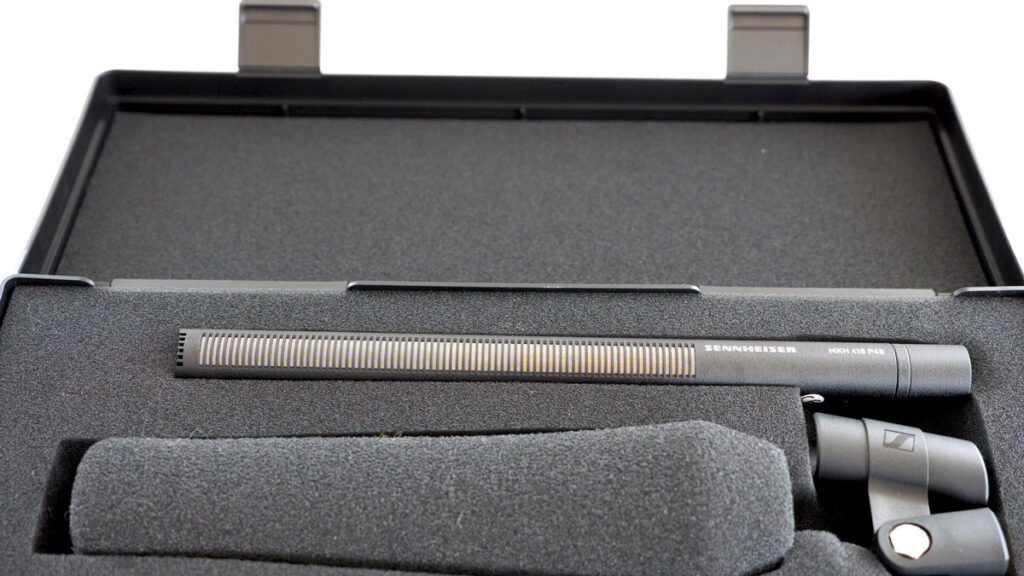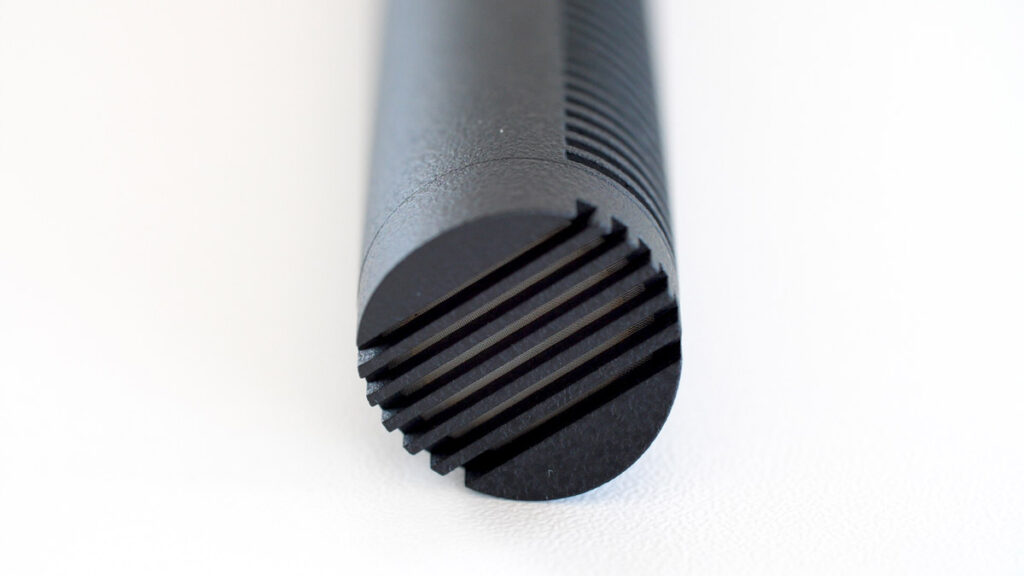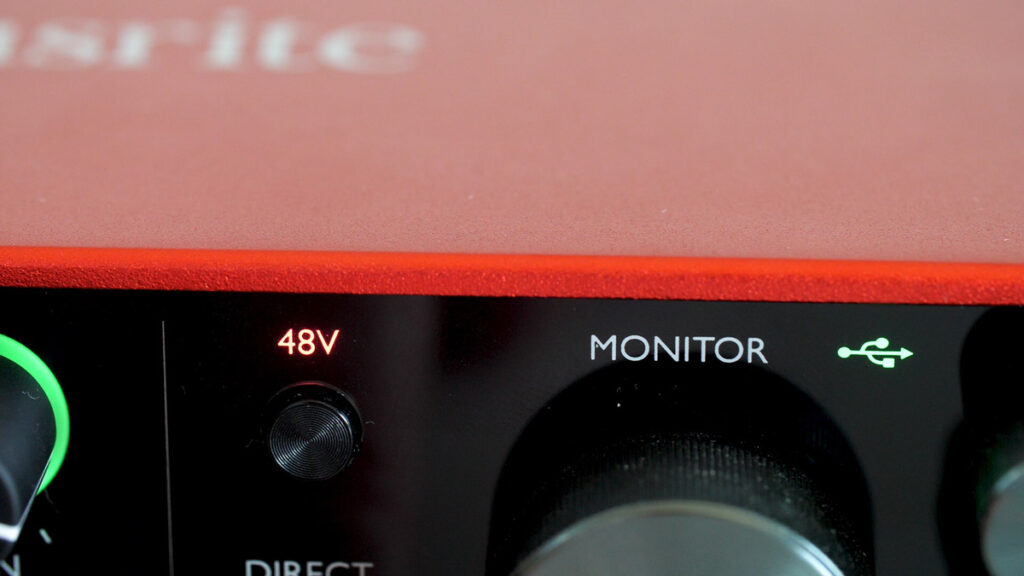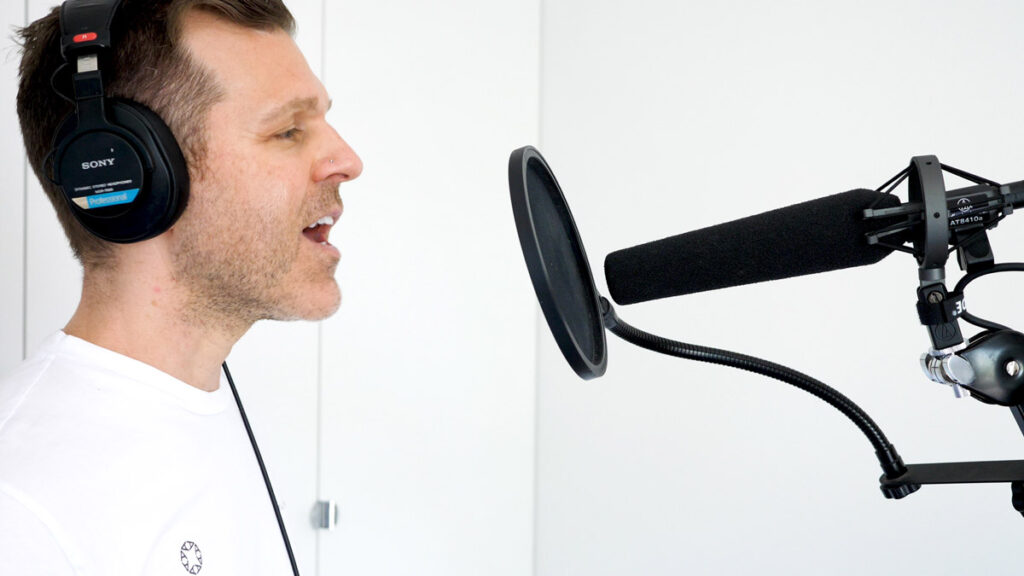Is the Sennheiser MKH 416 the best microphone for voice actors? Is it worth the price? The answer is complicated. Let’s dig in.
When it comes to microphones widely used in professional voice over, you’ll hear the term industry standard tossed around for a handful of commonly used mics.
But aside from the implication that a lot of people use a particular piece of gear, what does that really mean to beginner and working voice actors?
Let’s have a look at one of those industry standards: the Sennheiser MKH 416.
Then we’ll dive a little further into arming yourself with information so you can choose the right microphone for yourself, no matter what your budget is.

What is the Sennheiser MKH 416?
The Sennheiser MKH 416 is an end address condenser shotgun mic.
It has a hypercardioid polar pattern at low range to medium frequencies – which then transitions to a lobar pattern at higher frequencies.
What does polar pattern mean?
The polar pattern determines how much of the audio signal will be picked up by the mic – and from which directions.
The Sennheiser 416 does a really good job of only picking up what it is directly pointed at – and rejecting some peripheral sound (more on this in a second).
- But additionally, this mic has a wide frequency response. Voice actors can record sound files that are clear and packed with dynamics.
- Basically, you get professional, true-to-life sound quality without having to resort to a ton of magic in post production.

Does the Sennheiser MKH 416 Require Phantom Power?
Yes.
Condenser XLR microphones require some voltage to do their thing.
But unlike a USB mic (which internally powers itself from your computer), microphones with XLR connections will need to be externally powered to work.
What is phantom power?
- Phantom power delivers DC (direct current) via XLR cable, which powers the active circuitry of your microphone.
- As you speak, the power amplifies the vibrations your microphone is capturing from your voice.
- This is commonly referred to as 48v power.

Sounds scary and complex, right? But no need to worry.
Luckily, most consumer/prosumer audio interfaces have 48v phantom power built in – and that works even if you’re just drawing power from your laptop battery into your audio interface.

The 416 Has Decades of Mixed Use Work Under its Belt
When it comes to cream of the crop pieces of audio gear, we tend to associate new with better.
But in the case of the 416 (and many quality XLR mics) that truism doesn’t hold much water.
Sennheiser developed this microphone in the 1970s.
It has been the go-to field microphone for capturing location sound in movies and TV almost since inception. In fact, you’ll sometimes hear it referred to as the movie mic.
But it has also become widely used as a voice over microphone for commercial projects and character work.

What Makes the Sennheiser MKH 416 a Good Microphone for Voice Over?
There are a few things:
- Excellent directivity. That tight polar pattern and the short interference tube translate into recordings that pick up more of what you do want (your voice) and less of what you don’t (everything else).
- World-class feedback rejection and low self-noise.
- Pro-level sound quality. There’s a reason the MKH 416 is widely used in professional recording studios. (Seriously, it’s being used roughly 2 out of 3 times I record a session at a studio.) It’s one of a handful of ‘industry standard’ microphones in the VO world.
- You can get the 48v power you’ll need from most audio interfaces.
- Very little (if any) post processing needed.
- Physically, it’s a tank. While you wouldn’t want to throw it around, that all-metal body and matte black finish inspire confidence that it is built to last.
- The 416 is practically immune to humidity.
But I’d argue the the number one benefit of using the Sennheiser MKH 416 as a voice actor is the sound presence.
Adjectives like dynamic, compelling and robust come to mind.
Recorded voices come out sounding like they’re in the room.
Start Your Career as a Voice Actor
Voice Over: The Ultimate Beginner’s Guide
Is the Sennheiser 416 Worth It?
That depends.
- Do you have a grand to spend (comfortably) on a microphone? If so, then yeah – it’s a good one. A really good one. The cost to quality ratio is excellent. Grab the Sennheiser MKH 416 here.
- If your answer to that financial question is a solid no or a tentative um, not really – then there are some really great options at a way lower price point.

The calculus is different for everyone.
Maybe a better question is: Are you regularly booking voiceover work from your home studio?
If so, that paid work will likely pay for your purchase rather quickly.
However, aside from budget, here are some things beginner voice actors should consider when it comes to purchasing this microphone – and VO gear in general:
- Is your recording space set up and properly sound treated? If not, this should be your first priority. The 416 rejects some peripheral noise – however it’s still a super sensitive microphone. It won’t hide echoey reverb or the sound of rush hour traffic.
- How’s your mic discipline? What I mean by that is are you able to voice act while staying on mic? The drop-off angles are significant with the Sennheiser 416. If you tend to move around a lot while reading, a side address microphone with a wider polar pattern may be a better fit.
What is the Best Microphone for Voice Actors?
That’s the trillion dollar question, right? I’ve mentioned this before:
When it comes to recording quality audio for voice over, there’s no best or worst anything. There’s just good enough and NOT good enough.
While that may seem like a confusing answer at first glance, it’s not a cop out. Because everyone has a different threshold on how much of their money they’re willing to part with to pursue VO.
And there’s great gear at both astronomical and bargain price-points.
That also means, if you do a good amount of research and due diligence, you can track down quality gear no matter what your budget looks like.

Here are Some Ideas on Where to Research Voiceover Gear
- Gather general info on the web. Specialty sites (like MicrophoneGeeks and SoundGuys, etc.) have in-depth reviews that can get you pointed in the right direction.
- Read reviews on sales sites. B&H, Sweetwater, Reverb and Adorama are all legit sellers with a large customer base and customer reviews on all types of recording gear. Amazon and B&H have page-fields you can ask questions and read past responses.
- Watch some YouTube videos. Mike DelGaudio’s microphone reviews on his channel Booth Junkie are excellent. Start there, then let the YT algorithm do its thing.
- Check Reddit. There are subreddits on everything. And while there can be some bad info out there, the community in the more established and active subreddits tends to downvote the worst info into oblivion.
- Go to Guitar Center. If you live close to a brick-and-mortar music shop, go in and try the gear out for yourself. BUT, go in with specific pieces of gear in mind already. Walking in without a firm plan is a recipe for financing an unnecessarily large purchase with a brand new store credit card.
So, is the Sennheiser MKH 416 the best mic for voiceover? I don’t know that I’d go that far. But it is so damn good that, for me at least, the answer to that particular question doesn’t really matter.
And check out these other things beginner voice actors should know:
- 9 Audition Tips for Beginner Voice Actors
- How Much Money do Voice Actors Make?
- The One Thing Successful Voice Over Artists All Have in Common
- Why Commercial Voiceover Offers the Most Opportunities to Voice Actors
Plus:
Curious about how to start your voice acting career? Want to learn more about voice acting and the things beginners should know about the voice over industry? Bring your natural talent and check out my class for beginners!



Leave a Reply